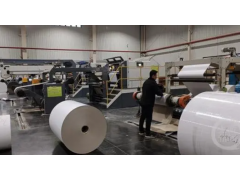Recently, the research group of Professor Cong Huaiping from the School of Chemistry and Chemical Engineering of Hefei University of Technology and the research team of Academician Yu Shuhong of the University of Science and Technology of China have developed a unique star-shaped polymer nanocomposite hydrogel ink to achieve The rapid printing and surface patterning of high-toughness, reparable and regenerative multifunctional hydrogel films have been successfully constructed, and a variety of high-performance humidity-responsive flexible sensing electronic devices have been successfully constructed.
Relevant research results were published in the American Chemical Society "Nano Letters" under the title "Rapid Printing and Patterning of Tough, Self-Healable and Recyclable Hydrogel Thin-Films toward Flexible Sensing Devices" (Nano Lett. 2022, DOI: 10.1021/acs. nanolett.2c02446), the first author of the paper is Associate Professor Qin Haili, a young teacher.
In recent years, two-dimensional flexible thin-film electronic devices have attracted extensive research interest due to their excellent mechanical flexibility and stimulus-signal conversion ability. Hydrogels have excellent biocompatibility, high water content and mechanical elasticity, especially their unique hierarchical porous structure and swelling properties, which are conducive to convenient and effective loading of chemical substances, so as to realize the functionalization of materials efficiently. Therefore, as an ideal polymer matrix, hydrogel has significant advantages in the field of building smart responsive flexible thin film electronic devices by compounding conductive elements and rationally designing the surface structure. At present, researchers have adopted a variety of "bottom-up" strategies to prepare a series of flexible hydrogel films by using small molecular monomers, cross-linking of polymers or assembly of block polymers. However, there are still huge challenges in how to precisely control the thickness of the film, construct the microscopic pattern on the surface, and solve the small-scale preparation caused by harsh conditions. At the same time, the increasingly severe energy and environmental problems have also put forward higher requirements for the sustainable development of future flexible electronic devices, and the self-repair and recyclability of electronic devices have also become important issues that need to be solved urgently in the field of materials. To this end, the research team synthesized a new nanocomposite hydrogel ink with a star polymer as the basic unit by synergizing nanocomposite initiation, metal coordination and in-situ polymerization techniques. Taking advantage of the unique dissolution behavior of the gel ink in water, the researchers developed a facile and efficient slip casting technique to achieve rapid printing and surface patterning of large-area hydrogel films. The thickness of the hydrogel film can be finely regulated in the range of hundreds of nanometers to several micrometers by adjusting the conditions such as sliding speed and number of times and star polymer concentration. By tuning the ink composition and substrate surface structure, a series of multifunctional hydrogel films can be obtained. Using the hydrogen bonding between the arms of the star-shaped polymer and the metal coordination between the core and the arms in the gel-polymer network, the film exhibits self-healing behavior under multiple stimuli. In addition, the reversibility of the hydrogen-bonding interactions between star-shaped polymer arms/arms endows the hydrogel films with unique recyclability and reuse capabilities. The research team has also developed a new repair-induced horizontal and vertical assembly mechanism, as well as a printing and patterning integration strategy, using the prepared multifunctional gel film as a material primitive and utilizing its unique humidity responsiveness to achieve moisture-responsive flexibility. Construction of actuated switches, flexible capacitive sensors, and non-contact flexible electronic skin. The rapid printing patterning technology developed in this research has wide applicability in the field of large-area preparation and assembly of flexible films, and will have a positive impact on the field of flexible electronic devices. The research work has been funded by the National Natural Science Foundation of China, the special fund for the basic scientific research business expenses of central universities, the Collaborative Innovation Project of Colleges and Universities in Anhui Province, the major special projects of Anhui Province, and the Natural Science Foundation of Anhui Province. (Correspondent: Cong Huaiping, Hefei University of Technology)







